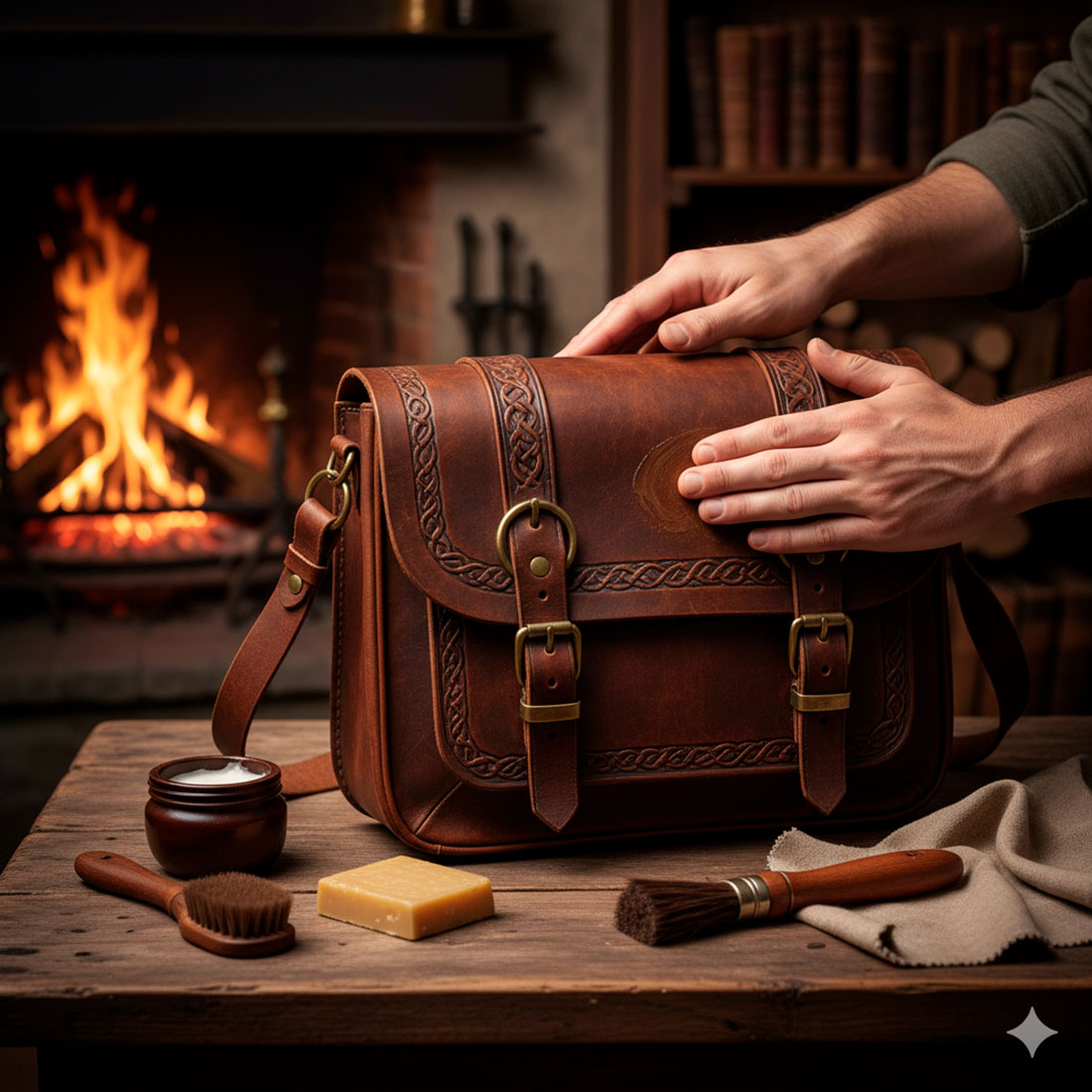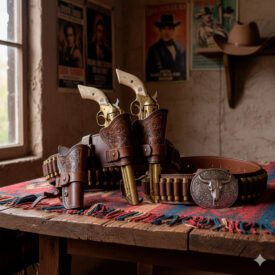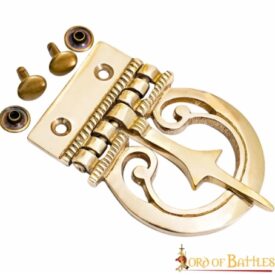In the vast tapestry of history, what object has accompanied humanity so constantly, adapting to its needs and reflecting its status? Undoubtedly, the medieval bag. More than a simple receptacle, it was a faithful companion, a silent witness to bustling markets, chivalric jousts, and the daily lives of our ancestors. Today, a replica of these treasures is not just an accessory, but a portal to an era of knights, ladies, and artisans. But how to ensure that this fragment of history in your hands endures, preserving its beauty and resistance through the years?
You will embark on a journey through the secrets of leather care, unveiling the practices that will keep your medieval bag as majestic as the day it was forged. From cleaning to hydration, you will learn to preserve its essence and protect it from the ravages of time, ensuring its legacy continues.
From Medieval Pouch to Modern Preservation: Milestones in Leather Lifespan
Small hanging pouches that replaced pockets have accompanied people from the Middle Ages to today. Their design and materials evolved according to fashion and function, and the treatment and preservation of leather has transitioned from artisanal practices to scientific techniques aimed at preventing shrinkage, breakage, and corrosion of metal accessories.
| Era | Event |
|---|---|
| Middle Ages (5th–15th centuries) | |
| Materials and usage | Waist bags (almoners, tasses/tassettes) were made of leather (goat or cowhide depending on social class), rich fabrics (velvet, silk with embroidery) or simple materials (carved wood, small animal skins). They were used for coins, rosaries, combs, sewing tools, and personal items; they were hung from the belt because sewn pockets did not exist. |
| Security | Hanging purses were the target of “purse-cutters,” who cut the strings to steal them. |
| 19th Century | |
| Fashion and revival of the waist bag | With the fashion of the bustle, hanging pieces such as châtelaines or escarcelles reappeared, cinched at the waist and functional as well as ornamental, resembling the modern fanny pack. |
| 20th Century — conservation practices (early to mid-century) | |
| Problematic historical treatments (prior to 1976) | Products like Pliantine® and BMLD® proved to be short-lived: they caused the leather to become hard, brittle, sticky, and dirt-accumulating. |
| Solvent-based treatments | Some solvent treatments (e.g., Bavon ASAK/ABP) left the leather soft, malleable, dry to the touch, and with a rich brown color; in archaeological contexts, solvent treatments tended to survive well with iron hardware. |
| Late 20th Century – Present (professional techniques) | |
| Modern conservation techniques | Conservators use glycerol pretreatments followed by freeze-drying to minimize shrinkage, preserve fine details, and maintain dimensional stability and flexibility in valuable or archaeological pieces. |
| Leather–metal compatibility | It has been observed that aqueous treatments (e.g., glycerol) can promote corrosion of iron hardware, so compatibility between leather and metal must be evaluated before applying treatments. |
| Contemporary maintenance and storage practices | |
| Cleaning and maintenance | Cleaning is done with gentle running water and soft brushes; fragile objects can be cleaned by immersion in an ultrasonic tank. After cleaning, it is recommended to apply a small amount of Ballistol to prevent dryness and maintain flexibility. |
| Prevention of drying | Uncontrolled drying from a wet state causes dramatic shrinkage, stiffness, and possible delamination, almost irreversible damage; therefore, avoiding prolonged wetting and controlling humidity is essential. |
| Storage | Sensitive leather requires reasonably dry and stable conditions. If transparent plastic packaging is used, it must be perforated to prevent internal condensation. Avoid abrupt fluctuations in humidity and temperature. |
| Repair and limitations | Avoid old or inappropriate treatments; for high-value replicas, consider professional treatment. Always evaluate the compatibility between conservation products and the materials present (leather, metals, textiles). |
First Steps: Cleaning and Protecting Leather
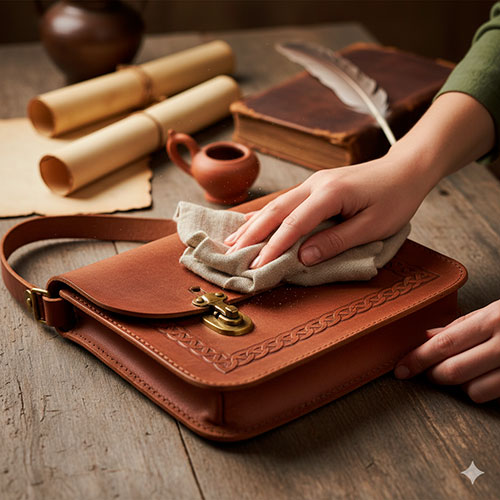 The foundation of lasting care lies in cleaning. With the delicacy of a master craftsman, use a soft cloth to remove dust and surface dirt after each use. For a deeper clean, use a lightly dampened cloth with clean water. Remember, excess water is leather’s enemy; dry it promptly and air dry, away from direct heat sources that can dry and crack it.
The foundation of lasting care lies in cleaning. With the delicacy of a master craftsman, use a soft cloth to remove dust and surface dirt after each use. For a deeper clean, use a lightly dampened cloth with clean water. Remember, excess water is leather’s enemy; dry it promptly and air dry, away from direct heat sources that can dry and crack it.
Once clean, your bag is ready to receive the nourishment it deserves. Specific leather balms and conditioners are your allies. Apply them gently, using circular motions, so that the leather absorbs their properties, maintaining its flexibility and that subtle shine that makes it so special. If using a product specifically for treating natural leather and hide, such as those from the Ballistol brand, a small amount will be enough to prevent dryness and preserve its malleability.
Hydration: The Vital Elixir for Leather
Leather, like skin, needs constant hydration to avoid losing its elasticity and prevent fatal cracking. Think of leather as a living organism that breathes and nourishes itself. Balms, moisturizing creams, or good quality oils are essential to maintain its resistance and flexibility. Apply them regularly, following the manufacturer’s instructions, and watch your bag rejuvenate, recovering its soft touch and vibrant appearance.
This process is crucial for extending the lifespan of your bag, preventing the damage that time and dehydration can cause. Proper hydration is the key for your medieval treasure to remain functional and aesthetically impeccable.
The Feared Enemy: Humidity and How to Combat It
Humidity is one of the biggest challenges for leather conservation. An excessively humid environment can lead to mold growth, loss of flexibility, and even stiffness and cracking. If your bag gets wet, dry it immediately with a dry cloth and let it air dry, without exposing it to direct sunlight or heat sources. Waterproofing protectors can be a great ally to reinforce its water resistance.
For storage, choose a cool, dry place, away from direct sunlight and humidity. Avoid airtight plastic bags, as they prevent the leather from breathing and can generate condensation. Opt for breathable cloth bags and stuff the bag with ink-free paper to maintain its original shape and ensure proper ventilation.
The Sun: A Love That Can Burn
 Although the sun may seem harmless, prolonged exposure to its rays can be devastating for leather. Ultraviolet light accelerates discoloration, weakens fibers, and makes the material brittle. Protect your bag from direct sun and store it in a dark place when not in use to maintain its vibrant color and intact resistance.
Although the sun may seem harmless, prolonged exposure to its rays can be devastating for leather. Ultraviolet light accelerates discoloration, weakens fibers, and makes the material brittle. Protect your bag from direct sun and store it in a dark place when not in use to maintain its vibrant color and intact resistance.
Resolve Your Doubts About Medieval Bag Care
What are the best products for medieval leather care?
For medieval leather care, it is recommended to use specific products that keep the leather flexible and protected. Some of the best products include:
- Natural oils: Neatsfoot oil or mink oil are proven options to penetrate deep into the leather and maintain its flexibility.
- Leather balms: A thick balm is ideal for areas exposed to wear, forming an additional protective layer.
- Leather conditioners: There are popular products that you can find in our online store to restore and protect leather, although they must be applied carefully because they can slightly darken it.
It is important to apply these products correctly, starting with cleaning and drying, and then applying a small amount with a soft cloth. Always test the product first on a less visible area to ensure it does not alter the color or texture of the leather.
How can I maintain the vibrant color of my medieval bag?
To maintain the vibrant color of your medieval bag, you should clean it regularly with a soft cloth, avoid direct exposure to sunlight and humidity, and apply specific products for material care, such as creams or dyes for leather or fabrics that help preserve color and texture. Additionally, using a clear varnish can protect it from wear and dust, and always keep it in a dry and cool place to prevent damage.
Applying moisturizing cream or dye evenly across the entire bag helps prevent color differences over time. These practices ensure your bag maintains its faithful and vibrant appearance for longer.
Which cleaning techniques are most effective for medieval bags?
To clean medieval leather bags, the following techniques are recommended:
- Loose dirt removal: Use a soft brush or cloth to remove dust and surface dirt.
- Damp cloth cleaning: Dampen a soft cloth with clean water and no harsh detergent. Make sure there isn’t too much moisture; then, dry with a clean cloth.
- Avoid chemical products: Do not use aggressive cleaning products, as they can damage the leather.
- Conditioning: Apply a specific leather conditioner to keep the leather soft and hydrated.
- Air drying: Let the bag air dry without applying direct heat.
- Protection with covers: Store the bag in a protective cover to prevent dust and external damage.
- Stuffing replenishment: Keep the bag stuffed when storing it to preserve its shape.
Is it advisable to use oil or grease in the care of medieval bags?
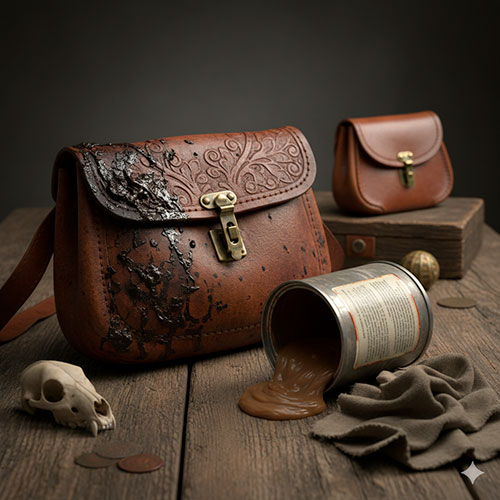 It is not advisable to use common oil or grease for the care of medieval leather bags, as they can stain the leather and cause permanent damage. It is best to use specific leather products, such as conditioners or creams that do not contain silicones or petroleum derivatives, as they hydrate the leather without damaging it. For grease or oil stains on leather, it is appropriate to treat them as soon as possible with absorbent powders such as talc and then apply a specialized conditioner to replenish moisture.
It is not advisable to use common oil or grease for the care of medieval leather bags, as they can stain the leather and cause permanent damage. It is best to use specific leather products, such as conditioners or creams that do not contain silicones or petroleum derivatives, as they hydrate the leather without damaging it. For grease or oil stains on leather, it is appropriate to treat them as soon as possible with absorbent powders such as talc and then apply a specialized conditioner to replenish moisture.
Proper maintenance includes gently cleaning, avoiding excessive humidity and direct sunlight, and conditioning the leather once or twice a year with products designed for it. The use of specific mineral oils for leather may be occasionally acceptable if applied carefully, but it is not the most common or recommended for delicate or antique pieces such as medieval bags. Therefore, the direct application of regular oils or greases should be avoided, and specific leather treatments should be chosen.
How does humidity affect the maintenance of medieval bags?
Humidity negatively affects the maintenance of medieval bags, especially if they are made of leather, as it can lead to mold growth, loss of flexibility, stiffness, and cracking of the material. A humid environment fosters the growth of fungi and deteriorates the leather, in addition to generating unpleasant odors. Therefore, it is essential to store these bags in controlled humidity conditions, ideally between 40% and 50%, and avoid prolonged exposure to humid or wet environments to preserve their integrity and durability.
Regular cleaning and ventilation are also recommended, as well as the use of specific leather products that repel humidity and protect the leather.
With every care you give your medieval bag, you not only preserve an object, but you honor the history it represents. With these cleaning, hydration, and protection practices, your bag will become a faithful companion that will accompany you on countless adventures, carrying with it the echo of past times and the promise of a lasting future. May the legacy of craftsmanship endure in your hands.
VIEW MEDIEVAL BAGS | VIEW VIKING BAGS | VIEW CELTIC BAGS | VIEW ALMONERS | VIEW LEATHER BACKPACKS
